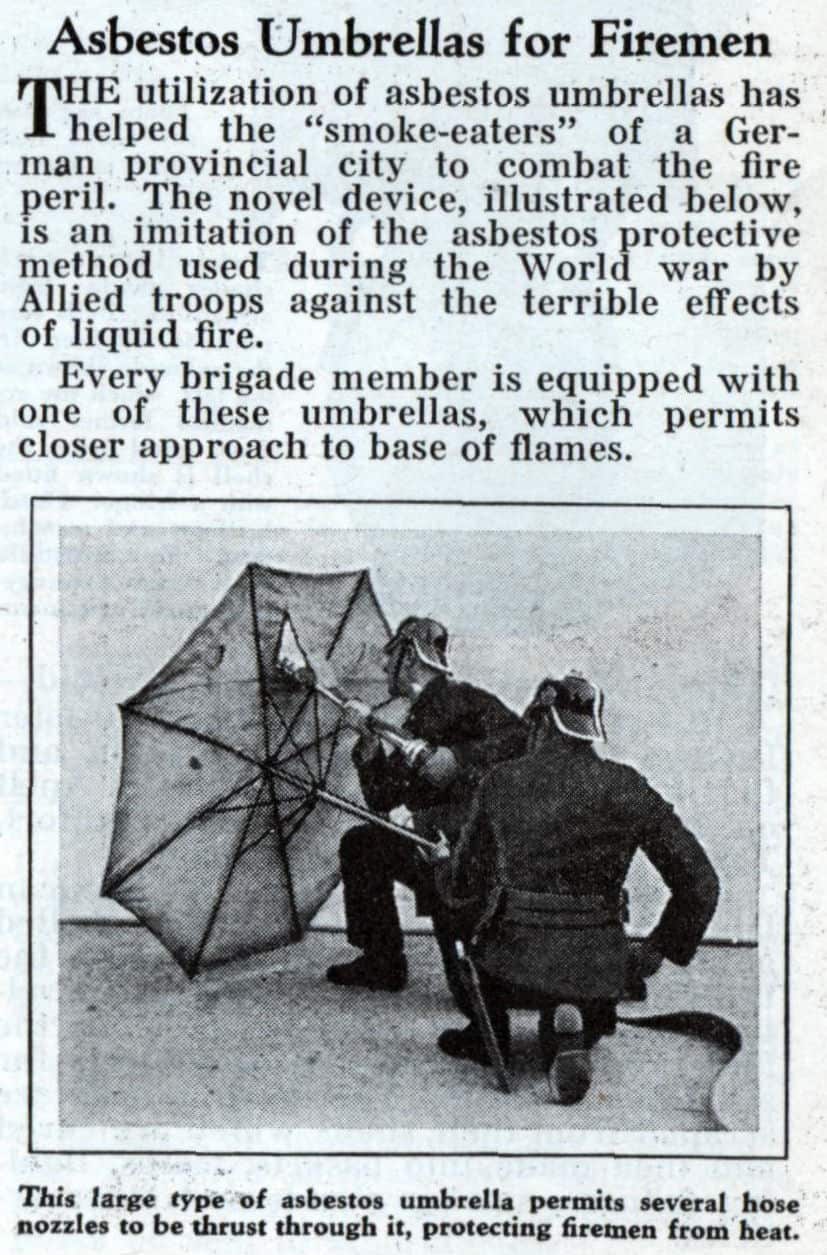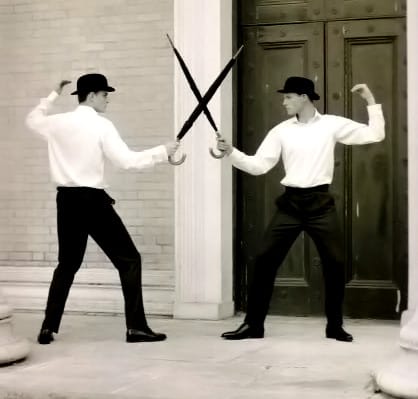July 3rd marks the anniversary of a minor Toronto disaster: the umbrella manslaughter of Barrister Murdoch. It serves as a poignant reminder of the dangers less commonly associated with the humble umbrella. For a time those dangers were widely publicized, as during the turn of the 20th century, a spate of umbrella related maiming, murders, accidents, and duels swept across the world.

For the serious umbrella duelist, the merits of umbrella-based combat were numerous. For one thing, an umbrella blow need not be fatal but could certainly cause bodily harm. The umbrella was easy to access and a common staple of households everywhere. There was no duelling code specifically for umbrellas, so those practitioners of the umbrella fight may not have shared the same gentlemanly approach as duelists with rapier or pistol. The field of honour did not necessarily extend to umbrella-based combat, as these umbrella “duelists” would attack from behind over a small slight or misplaced word.
Umbrella duels could be gruelling affairs of stamina, as the sixteen bout battle between a pair of co-ed competitors in June of 1909 demonstrated. Though that particular duel was a friendly one, others were mortal affairs, as the impromptu murder of Mr. Kaiser highlights. Mr. Kaiser battled his superior opponent inside of a streetcar rattling down a Montreal street before being fatally stabbed through the brain. Other injuries came about by accident, as in the playful (possibly vodka-fueled) stabbings at weddings or the accidental ear punctures brought about by running children. The umbrella became a tool of the nobility, the dispossessed, and the political extremist; it became the common weapon of choice when a rapier or firearm was not convenient.
Umbrella duels became common affairs by the 1890s, and they happened in a variety of venues between a litany of different warriors. There was a May 1904 action between two women in probate court which was only interrupted by a brave attorney dashing between the enraged combatants, who were causing a trail of destruction in the court’s adjoining hallway. There was a political candidate who attempted to skewer a member of the press in June of 1904, nailing the hapless newspaper man over the head on a busy St. Paul, Minnesota street corner.
There was the 1912 umbrella action between two militant faithfuls who couldn’t agree on proselytizing and therefore went about smiting each other with umbrellas. After a drawn out battle one of the brave crusaders lay on the ground with an umbrella through his lung. The effect of the fatal battle on the sleepy Pennsylvania church is not noted.
Finally, some umbrella duels gained folklore status due to their brutal nature. In one case, during a drawn out feud between two families, an act of infidelity led to the hushed up ambush of the perceived adulterer. His eyes were gouged out by umbrella point. Finally, some umbrella duels occurred over seemingly nothing at all, not unlike their more refined aristocratic cousins. In 1894, the failure to respond to a simple “hello”, set off an umbrella fight. The aggrieved party, feeling ignored, decided to nail the victim in the back of the head upon debarkment from their railcar, only to receive a spirited defense from the wounded gentlemen. Both survived their battle, though were thoroughly ashamed of their duel, as they refused to speak about it after the fact.
International umbrella brutality wasn’t confined to Britain and the United States; umbrellas were being used as weapons all across Europe. With their long history of duelling, they joined in the sport as well, knocking out teeth, puncturing cheeks, and braining each other in cafés and on cobblestones from Paris to Leiges.
Incidentally, the Germans developed a distinctly helpful umbrella: an asbestos-imbued monster meant to protect firefighters battling flames at close quarters. While every fireman was armed with an asbestos umbrella, the negatives of waving around asbestos were not fully understood.
While there were a number of accidents and intentional injuries stemming from the improper use of umbrellas worldwide, there were also exceptions. The most impactful positive umbrella use was likely during a critical streetfight at the turn of the century. In this case umbrellas were used as a weapon of liberation by suffragettes in London doing battle with the police in the summer of 1913. The bobbies were attempting to re-arrest a prominent suffragette, Emmaline Pankhurst, while her compatriots fought for her freedom. Six of the umbrella battering suffragettes were eventually arrested, and Mrs.Pankhurst was taken back into custody. It goes without saying while the suffragettes may have lost this battle, they did go on to win the war (and give a few good bumps along the way).

Preventative measures such as umbrellas with windows were also developed to prevent random brainings or accidental impalements. Unfortunately, this critical development was not widely adopted. From mortal combat to fire-fighting instrument, the ubiquitous umbrella has demonstrated such varied utility and usefulness that it is no longer possible to see it as just a simple rain stopper. Even today, umbrellas continue to demonstrate a lust for blood, as thousands are injured by their beach-based cousins yearly.
Want to hear more weird history? Be sure to join us on our new BUBBLE GHOST TOURS in Kingston, Ottawa & Toronto. A safe and fun way to get some fresh air and enjoy some great ghost stories.
Written By: Ezra Beudot, Historical Umbrella Researcher

